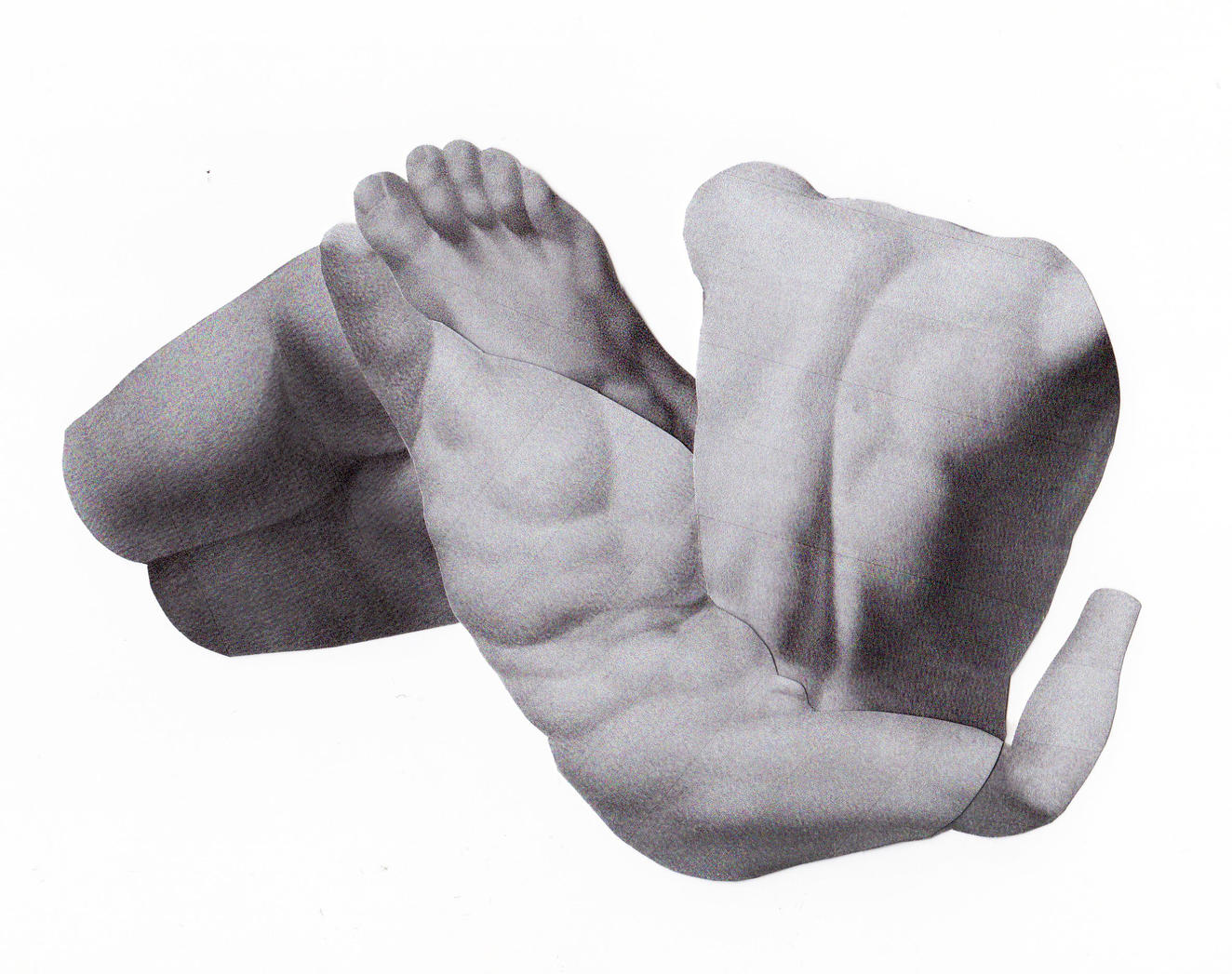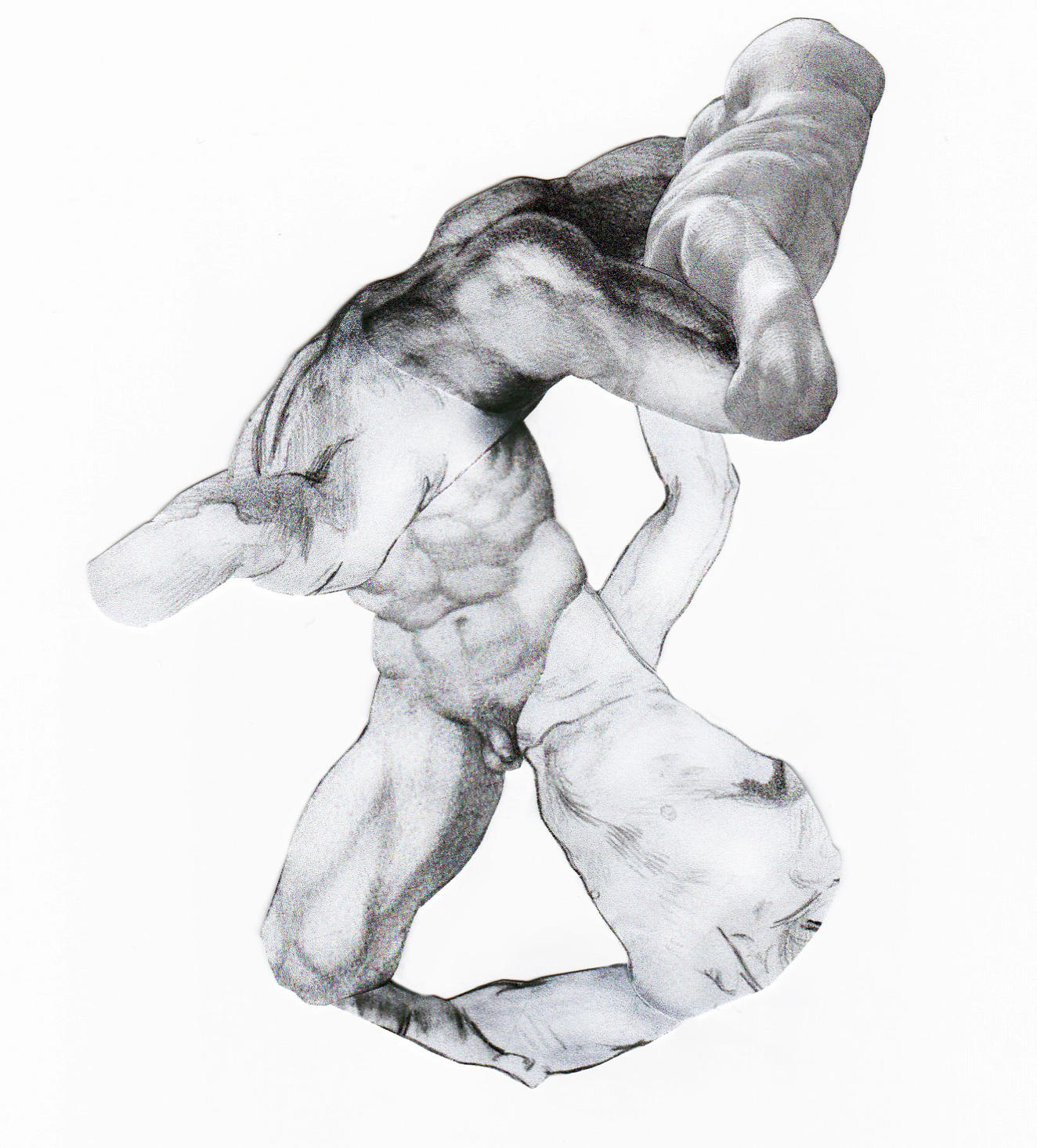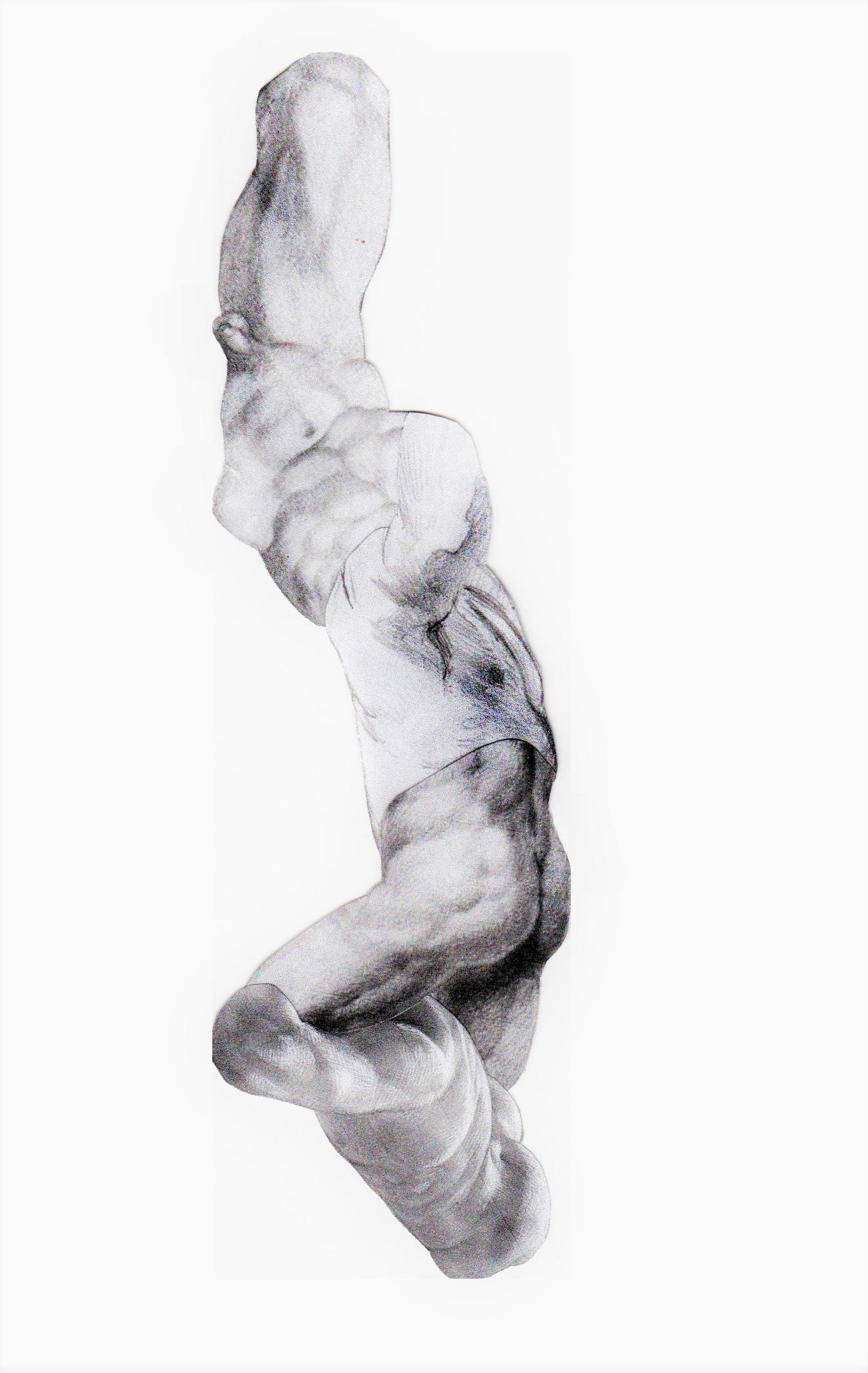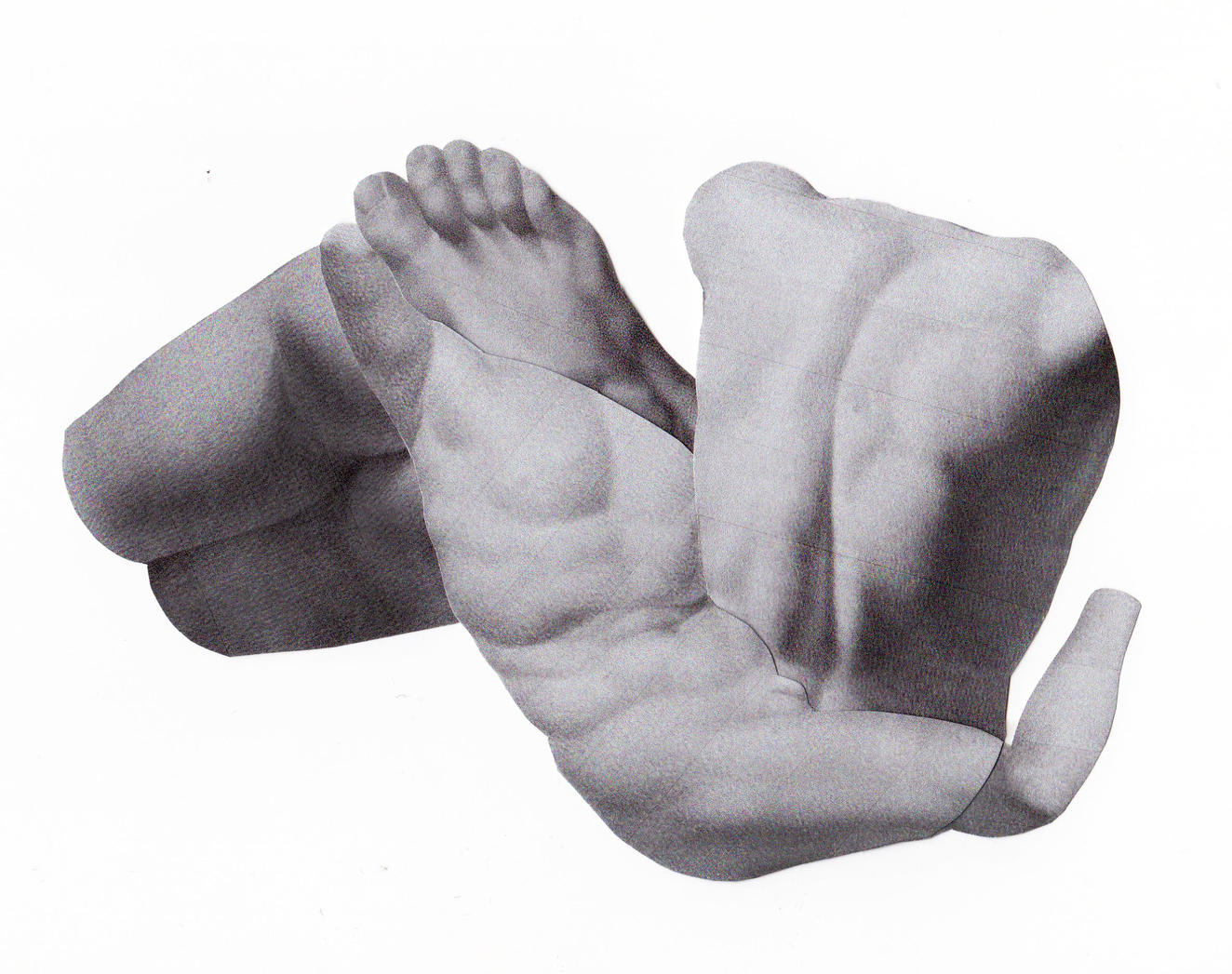Earlier this summer, I began making collages using parts of bodies from different paintings and drawings that I had spent my past semester studying. My research interests have always involved the nude male body, searching for ways that art has shaped and been shaped by societal constructions of masculinity, sexuality, and race, primarily in the late nineteenth to early twentieth century. During my curatorial internship in the Prints, Drawings, and Photographs department, my work included researching and looking critically at representations of disability. Endlessly scrolling through the collection digitally, looking for rare examples and depictions of otherness in the multitude of drawings and etchings, what I ended up looking at was a lot of the same type of form. Muscular, beefy, able-bodied cisgender males. The images began to swirl together.
My process for creating these images is relatively simple, and I like it that way. I look through the collection and pick bodies with features that stand out to me, whether that’s the rippling muscles or exciting shapes of the pose. Then, I cut out these specific features and tape them together, sometimes pushing pieces together and seeing how they fit and other times carefully rearranging until the form is perfectly confusing. I edit them a little in Photoshop, raising the contrast and blending shadows or highlights to create a more seamless look.
Thinking about the body in parts rather than as a whole is a huge departure for me in terms of my art historical research. As a trans person, this methodology is much closer to home than I might have realized. In my own experience and in the experiences of many other trans people, focusing on individual parts of one’s own body while ignoring others is a crucial coping mechanism. With this project, the act of breaking the body into singular pieces, pieces that for one reason or another I felt drawn to, and forcing them together in a way that was both aesthetically pleasing and monstrous, was my own way of reconciling what I saw in the collection with what I didn’t see.
Sam Nehila was the 2020 Andrew W. Mellon Summer Intern in Prints, Drawings, and Photographs. Sam is a graduate student at the University of Massachusetts at Amherst studying art history.




